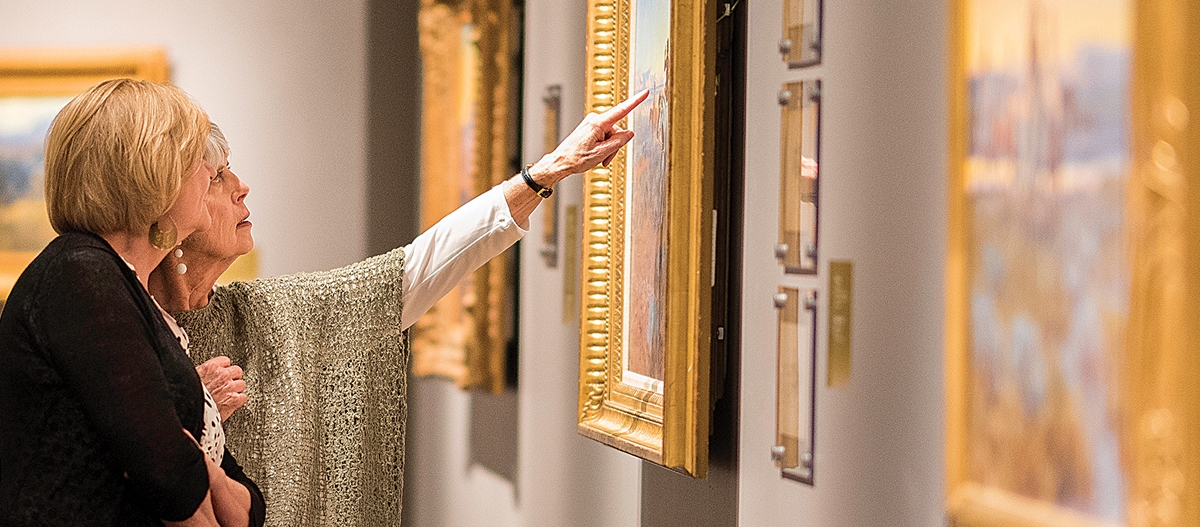By AARON PARRETT
When the C.M. Russell Museum in Great Falls bills its Return to Calgary: Charles M. Russell and the 1919 Victory Stampede as a “once-in-a-lifetime” experience, they are not kidding.
Defying the odds and overcoming what must have been a logistical nightmare, the crew at the Russell have assembled together 21 of the 24 original paintings and all eight of the original bronzes in order to recreate, 100 years later, a 1919 show that many consider to have been the pinnacle of Charlie’s career.
As longtime Russell scholar Brian A. Dippie writes in the exhibition catalogue, “by 1919, Russell’s artistry was fully refined.…His aim was to create convincing pictures that located figures and action in settings faithful to the world he knew. And, because he was a western artist, his work invariably was judged on its fidelity to fact—its contribution to the historical record—and its service to preserving a time and place that were no more, but still fascinated the public.”
The show opened on this last June and runs through September 30th. As masterwork shows are concerned, the public will probably never again enjoy this unique opportunity to see 29 signature pieces from the most fruitful and accomplished decade of C.M. Russell’s career all gathered together in one location.
As the title of the show indicates, the exhibit replicates Charlie’s show at the 1919 Calgary Victory Stampede, an international event held to celebrate the end of World War I.
That event not only cheered the war’s end, it also focused the cameras and pens of the world’s media on life in the far West and the art and culture of the great plains.
The persona of the cowboy as exemplified in the life of “cowboy artist,” C.M. Russell soon became an international icon for Montana and western Canada.
It was his second major event in Calgary, as he had also displayed his work in 1912 at the Stampede.
At that show, he’d sold more than half the paintings he displayed and cemented his reputation and fame as a premier Western American artist.
But 1919 proved to be even more auspicious, capping what art critics and scholars agree was Russell’s “greatest decade” as an artist.
“In the aftermath of the Great War, Western heritage and art became a safe place for both people in America and the Canadian borderlands to reflect on their values and find comfort. Charlie captured a spirit in his work that was unparalleled and a perfect pairing for the authenticity, exuberance and honor celebrated at the Victory Stampede,” said C.M. Russell Museum Executive Director Tom Figarelle.
“Seeing these works returned to their birth place along with the stories eloquently shared through fresh scholarship, allows us all to understand what it would have been like to know Charlie in his artistic prime.”
Take for example Russell’s masterpiece, “The Romance Makers” (1918), a Russell that is housed in the permanent collection at Notre Dame. Here’s your chance to see it a few hundred feet away from the cabin in which it was painted, down on 5th Avenue North in Great Falls.
We all grew up seeing that painting in books, but when you see it in person, it positively glows on the wall. It’s not a particularly large Russell picture—roughly 2 by 3 feet—but it’s one of his paintings in which he captured the myth of the West as it was unfolding right before his eyes.
His singular image of the solitary mountain man set the backdrop for countless western films, including those starring Clint Eastwood as “The High Plains Drifter.”
You’ll also see his 1916 masterpiece, “The Signal Glass,” another of his iconic western pictures, which also captures the impending “romance of the West” industry that would dominate the world’s conception of places like Montana. Artists wishing to emulate Russell’s techniques, especially his way of depicting light, will marvel at the way the mirror in the hand of one of the horsemen glows like a miniature sun.
The C.M. Russell Museum’s mission statement is quite broad (“to collect, preserve, research, interpret, and educate on the art and life of Charles M. Russell; the art and lives of his contemporaries; and the art of preceding and ensuing generations that depicts and focuses on the culture, life and country of Russell’s West”), but this exhibit hits every nuance it contains. This truly is a once-in-lifetime exhibition you will not want to miss, whether you’re a die-hard Russell enthusiast, or just a tourist passing through Great Falls. MSN








